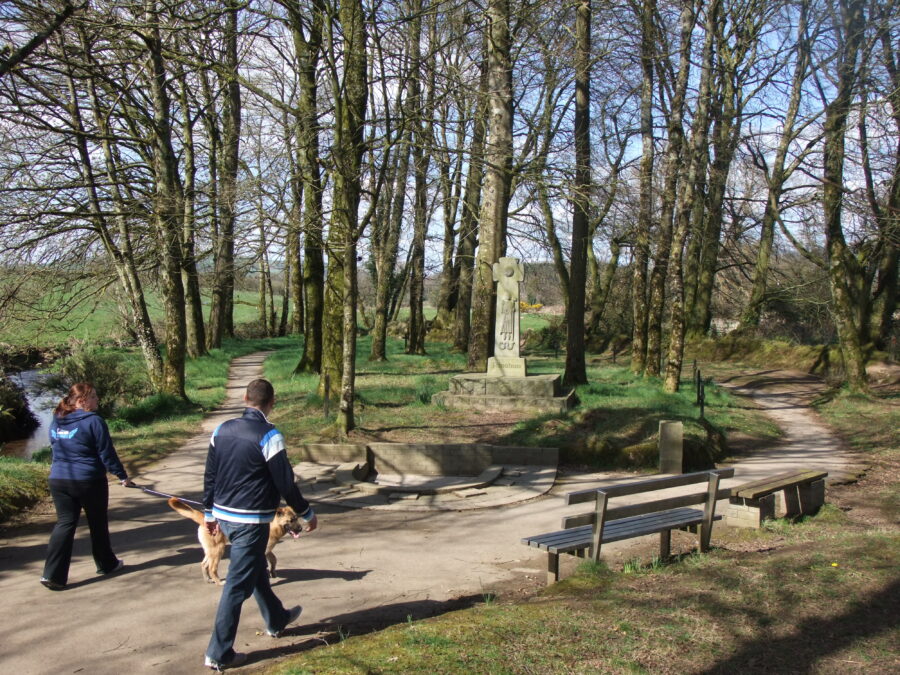
Kieran’s Our City, Our Town Article,
Cork Independent, 9 November 2023
Extracts: The A-Z of Curious County Cork
My new book, The A-Z of Curious County Cork is available in any good bookshop. Published by History Press UK (2023) the book has been born out of my own personal curiosity for many years now to venture off the main roads of County Cork to explore the curiosities of cultural heritage in County Cork. This week’s column shares more extracts from the new book.
Walk: The defeat of the united forces of the Spanish and Irish at the Battle of Kinsale in 1601 led to one of the longest and most deadly walks in Irish history. The O’Sullivan Beara Gaelic clan were driven out of the Castletownbere region by the English.
Seeking sanctuary, Dónal Cam O’Sullivan, chieftain of the clan, began the long march to Leitrim on 31 December 1602. He led 1,000 men, women and children, who constituted a large-scale flight of people from the Castletownbere region. In the middle of January 1603, the clan eventually arrived at their destination with only thirty-five people surviving. Many had been killed en route, were overcome by exhaustion, or came down with a lethal illness. Others disconnected from the long walk northwards and settled along the route.
In Leitrim, O’Sullivan requested to unite with other northern chiefs to battle English forces. However, Hugh O’Neil, the Earl of Tyrone sought peace and swore an oath of loyalty to the Crown. O’Sullivan and other Irish leaders sought exile, and made their escape to France and then on to Spain.
Warrior: A beautiful long path with beech trees on both sides now leads to Saint Fanahan’s holy well in Mitcheltown, where pilgrims can reflect on the life of the warrior monk, Fanahan. The ancient Book of Lismore recalls the legendary life and time of a warrior monk named Saint Fanahan, who was born at Rathkealy, Fermoy in the early seventh century AD. His father’s name was Finlog, and the Book notes that he was chieftain of a small number of areas consisting of a few acres of land, and was one of several people who were banished from Ulster. The reason for this, however, is not recorded.
The Book further outlines that when Fanahan was 7 years of age, his family sent him to a monastery in Bangor, County Down. There he was educated as a monk, and his tutor was its abbot, St Comgell. Fanahan pursued his education, and in the years that followed became abbot of the monastery himself.
As a result of his fiery temper, he clashed regularly with his fellow monks and was soon driven away from the monastery. Fanahan and some other monks moved to the province of Munster where Cathail Mac Aedh was king. The king, delighted with his new religious adviser, gave Fanahan free choice of where he wanted to locate a new monastery.
According to the Book of Lismore, Fanahan swapped his ‘good soul’ with the ‘bad soul’ of the King of Desise, which led to Fanahan searching to cleanse his new soul. This quest to repent for his sins led Fanahan to hire seven smiths to produce seven sicles, which Fanahan used to punish himself, thus earning back his place in heaven. The smiths in question refused to be paid, but requested the new monastery be called Brí Gobhann, i.e Smith’s Hill.
The Book of Lismore notes that during Fanahan’s self-punishment campaign, an angel is reputed to have appeared to him asking him to be involved in a quarrel between the King of Meath and his enemies.
Fanahan, alongside the king and his armies, subdued their opponents with ease. There is even a folklore reference that sparks of fire came out of Fanahan’s mouth and were directed towards the enemy, and that his staff had magical powers to move objects.
Fanahan also made time to undertake a pilgrimage to Rome. It is reputed it was here that he made his confession and swore to leave behind his violent ways. Perhaps he knew he was approaching his own death, which happened in 664 AD. Canonised in later centuries, Fanahan’s feast day is on 25 November. His magic staff was secured in the Brigown round tower, where it was highly valued until a storm heavily damaged the tower in 1720.
Wave: Cleena’s Strand is located in between Ross Bay and Galley Head. Just out from the beach is a rock named Carrig Cleena, around which the waters possess a dark hue. Passed down folklore describes that Cleena, or Clíona, was queen of the Munster fairies and banshee of the Desmond kings in the Middle Ages. One legend relates that Clíona was the daughter of Mannanán Mac Lir. He was an Irish sea god. The family is said to have lived in Tír Tairngire, an otherworldly paradise much like Tir na nÓg’ (Land of Youth). In such lands, there was no sadness, no growing old, no dying and it was a place where everlasting youth reigned.
Another tale describes that Clíona eloped from Tír Tairngire with an attractive young warrior named Ciabhán of the Curling Locks. They disembarked at Trá Théite, the strand at Glandore. Ciabhán left her in his boat. A mighty wave came in and she drowned. This wave was later renamed Tonn Chlíona (Cliona’s Wave). The wave is still deemed a loud and immediate harbinger of death for someone.
Caption:
1227a. St Fanahan’s Well, Mitchelstown, present day (picture: Kieran McCarthy).